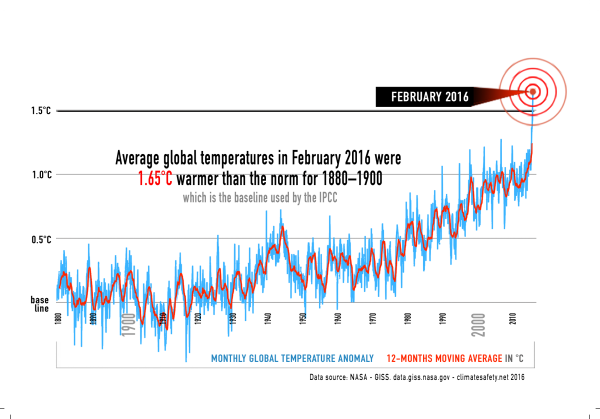Earth System scientists have made important progress in understanding the potential for tipping points to rapidly take us into planetary terra incognita. Their work has provided the basis for a scientifically based, quantitative definition of a climate emergency. Time for effective action is rapidly running out, as the scientific evidence mounts that the ‘the more we learn about climate change, the riskier it looks’.
Will Steffen is an Earth System scientist. He is a Councillor on the publicly-funded Climate Council of Australia that delivers independent expert information about climate change. He is also an Emeritus Professor at the Australian National University (ANU); Canberra, a Senior Fellow at the Stockholm Resilience Centre, Sweden; and a member of the Anthropocene Working Group. From 1998 to mid-2004, Steffen was Executive Director of the International Geosphere-Biosphere Programme, based in Stockholm. His research interests span a broad range within Earth System science, with an emphasis on sustainability and climate change.
&rarr: Covering Climate Now:
Fact Sheet: Who Says It’s A Climate Emergency?
A global reference point to what the science is saying about climate change is the United Nations Intergovernmental Panel on Climate Change special report on the impacts of global warming of 1.5°C above pre-industrial levels and related global greenhouse gas emission pathways. The report was published in October 2018, and in the context of strengthening the global response to the threat of climate change, sustainable development, and efforts to eradicate poverty.
You can read it here: ‘Global Warming of 1.5°C’
Article by Jane Morton in Renew no 148
→ Read more about why we are in a climate emergency in the report ‘Climate Reality Check’, which lays out the worsening climate reality, and urgency for action.
→ For a spoken-word overview of the climate science, see the David Spratt’s powerpoint presentation:
Spratt has given a number of presentations explaining the science and the emergency:
Why is emergency-scale action necessary?
Global temperatures and baselines – NASA’s temperature spike graph
The raw data for this graph is found at: www.data.giss.nasa.gov/gistemp/graphs_v3/Fig.C.txt
Antti Lipponen, a researcher at the Finnish Meteorological Institute, has compiled weather statistics between 1900 and 2016 and turned them into a 35-second video. The results back up what climate scientists have been saying for decades – the planet is warming up.
Below is another way of showing the data:
Image by Antti Lipponen
Different graphs – different baselines
The graph above uses the average temperatures of the period from 1880 to 1909 as its 0°C baseline.
Other graphs showing this data from NASA use the average of 1950-1980 temperatures as the baseline.
In February 2016, the global temperatures spiked to 1.6°C over the 1880-1909 baseline.
This is the same as 1.35°C over the 1950-1980 baseline.
Since the period 1880-1909 was roughly 0.2°C warmer than the mid-17th century pre-industrial average temperature, the February 2016 global average temperatures was actually 1.8°C above the real pre-industrial temperature.
You will see various temperature rises mentioned in material from IPCC and in other climate science documents and media articles. Unfortunately none of them use a consistent baseline. The temperature rise figures cited vary depending on which baseline is being assumed.
NASA:
March 2017 fourth warmest of any month in recorded history
NASA’s global temperatures data for March 2017 shows the month was 1.37°C degrees above a 1880-1909 baseline, making it the fourth warmest anomaly of any month in recorded history.
TOP 6
The six warmest months on record since 1880 were all in the last two years:
February 2016: 1.57°C
March 2016: 1.53°C
January 2016: 1.38°C
March 2017: 1.37°C
February 2017: 1.35°C
December 2015: 1.35°C
» Source: NASA dataset (Note: NASA uses a 1951–1980 baseline)
The figures below were provided by David Spratt on 13 September 2016.
RECORD HOT AUGUST, AND YEAR TO DATE
NASA today released its temperature data for August 2016.
It was 0.98°C warmer than the mid-20th century average.
This makes August 1.23C warmer than the 1880-1909 baseline (when observational records commence).
It is also the hottest August on record.
NASA says: “August 2016 was the warmest August in 136 years of modern record-keeping, according to a monthly analysis of global temperatures by scientists at NASA’s Goddard Institute for Space Studies (GISS) in New York.”
In addition: “The record warm August continued a streak of 11 consecutive months dating back to October 2015 that have set new monthly high-temperature records.”
Based on the 1880-1909 baseline, recent figures are:
2013-2015 average of 3 years: 1.01C
2015 year: 1.12C
Jan-March 2016 (El Nino peak): 1.51C
February 2016 (hottest month on record): 1.6C
Average for Jan-August 2016: 1.31C
First eight months of this year:
J 1.39C
F 1.6C
M 1.53C
A 1.36C
M 1.18C
J 1.05C
J 1.10C
A 1.23C
Note: for full pre-industrial figure (from mid-18th century), add 0.2C to all the above figures.
» The Conversation – 20 April 2017:
We need to get rid of carbon in the atmosphere, not just reduce emissions





